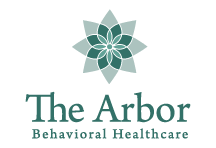“Generally, behavioral addictions pose a significant challenge for treatment and recovery. That’s partly because the behaviors that cause problems are, most of the time, not ones that lend themselves to abstinence,” says Barbara O’Dair, author of “Compulsions Without the Chemicals” for TIME Magazine’s Special Editions “The Science of Addiction.” “Plenty of people go their entire lives without drinking or smoking or doing drugs, and those who start can often stop. That’s true too of behavioral addictions such as gambling and video gaming. But there’s no such thing as swearing off eating or shopping or sex. They’re fundamental parts of human life.” This is what makes behavioral addictions so difficult to treat and manage. Arbor Behavioral Healthcare can help. Continue reading to learn more about how we can treat the disease that is addiction.
A State of Gray
“That fact requires people with compulsive, addictive behaviors to live in a state of gray – a little but not too much of the dangerous behavior – and addicts are very, very bad at gray,” says O’Dair. For many people battling behavioral addictions, they reach a rock bottom before they are able to build themselves back up. Building themselves back up can come in a few different ways. For some, the 12-Step model works well. They are able to be with others who share their struggles and can talk openly about what got them there and how they are working to better themselves. For others, some medications have proven worthy of “taking the edge off the anxiety or emptiness that comes from not indulging in the desired behavior.” Cognitive Behavioral Therapy (CBT) can also help the person with the addiction learn to reframe their thoughts by “challenging the internal narrative that a third doughnut, a fourth shirt in the same color, a fifth sexual partner will bring lasting peace and relief.”
No Two Are Alike
At Arbor Behavioral Healthcare, we know that no two addictions are the same. This means that no two treatments can be the same, either. However, O’Dair outlines five treatment protocols that most treatment methods share:
- Detox support to achieve initial stability.
- Diagnosis and evaluation to address co-occurring disorders.
- A treatment plan with a trained specialist, appropriate therapies and goals for recovery.
- Ongoing peer support and accountability, such as a 12-Step program with people in similar situations.
- Family support, including support groups for family members, education and family therapy.
Arbor Behavioral Healthcare wants to help you. Call our trained and experienced staff today at 844-413-2690. We can’t wait to hear from you and help get you started on your recovery journey today!


